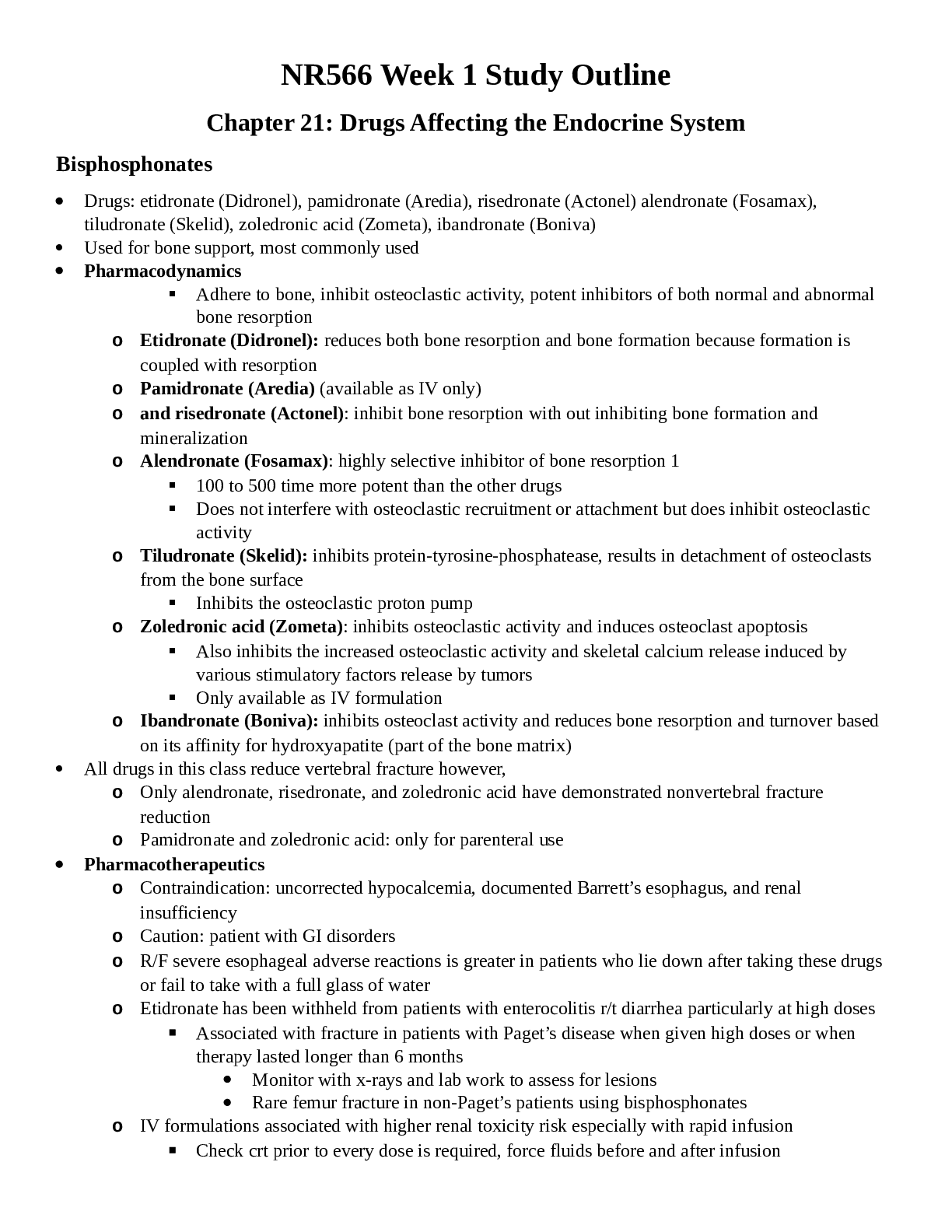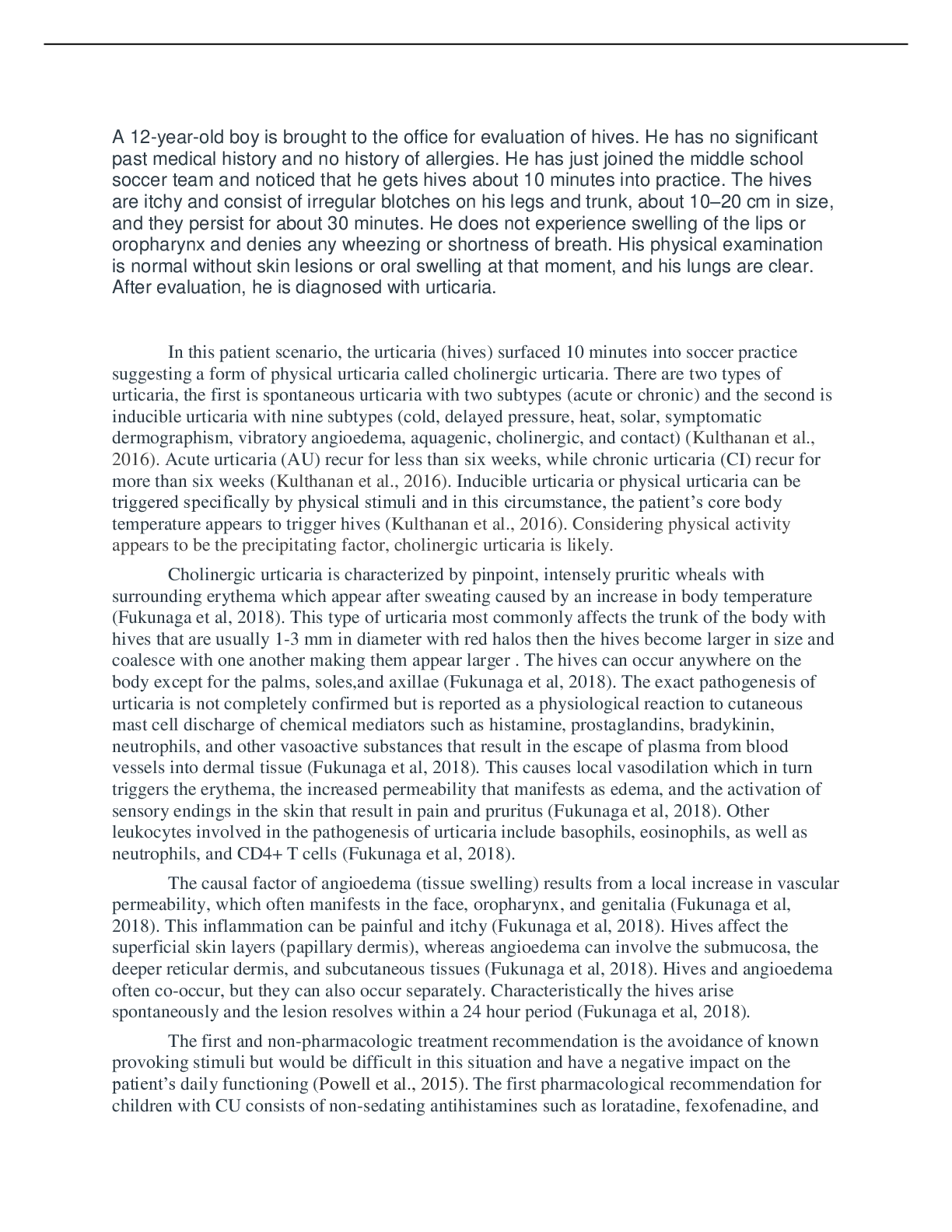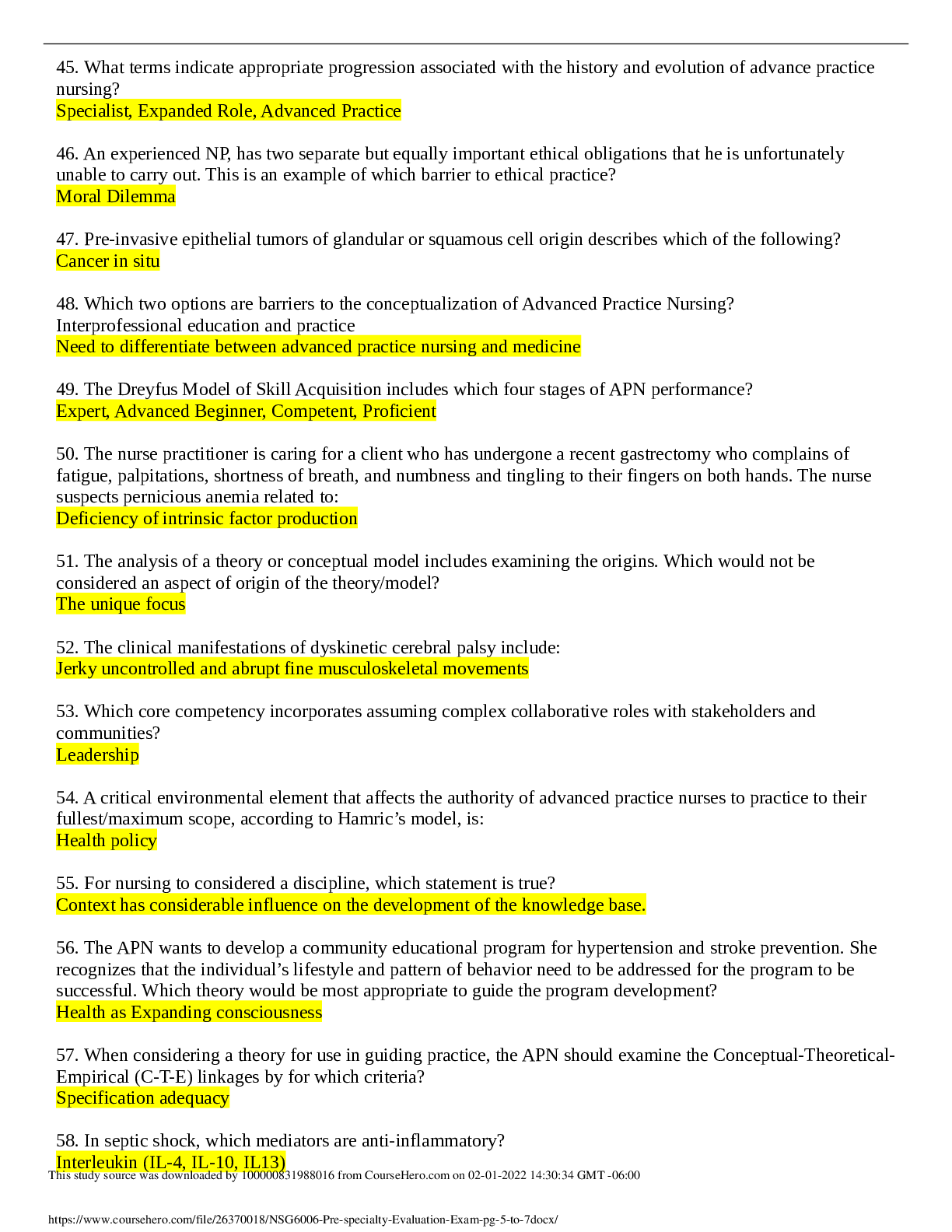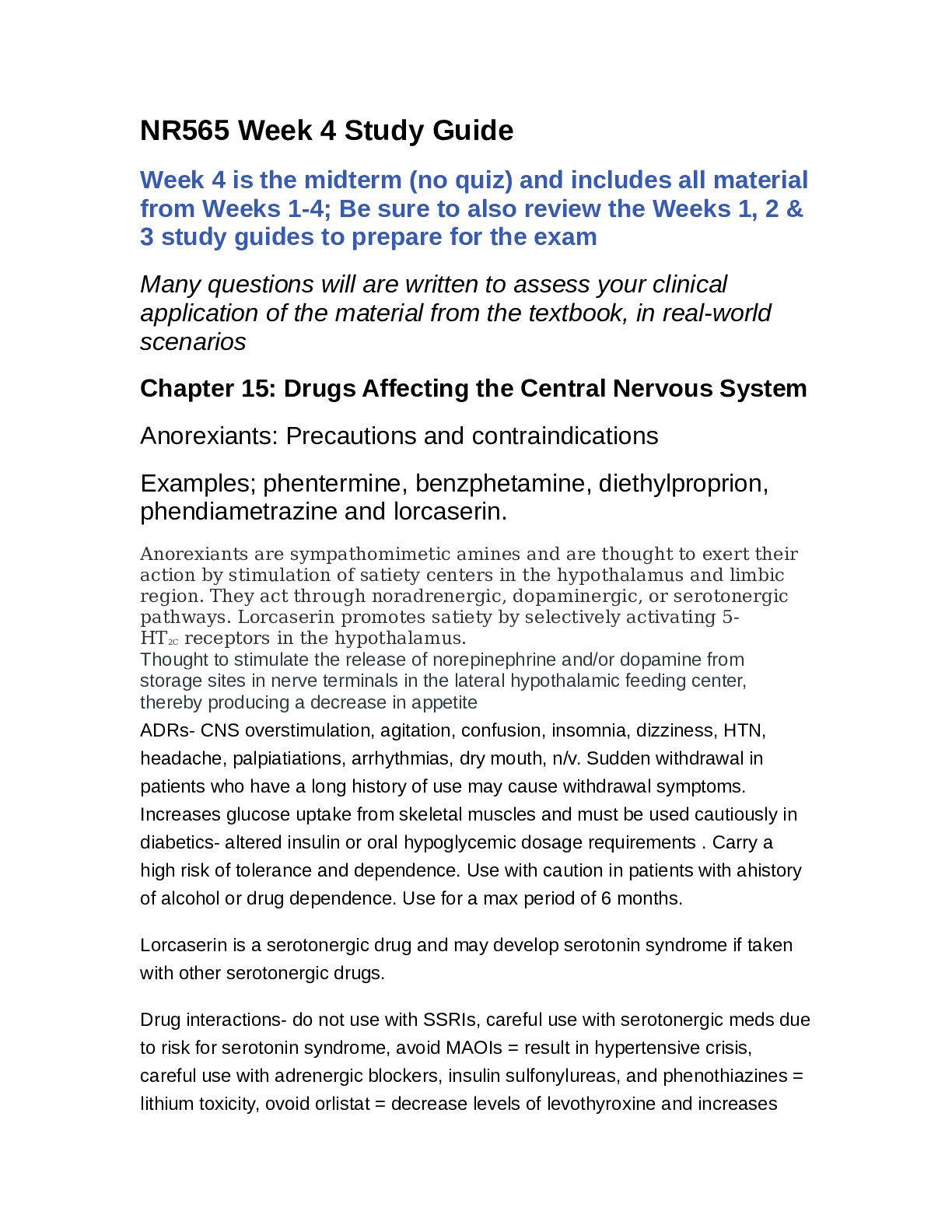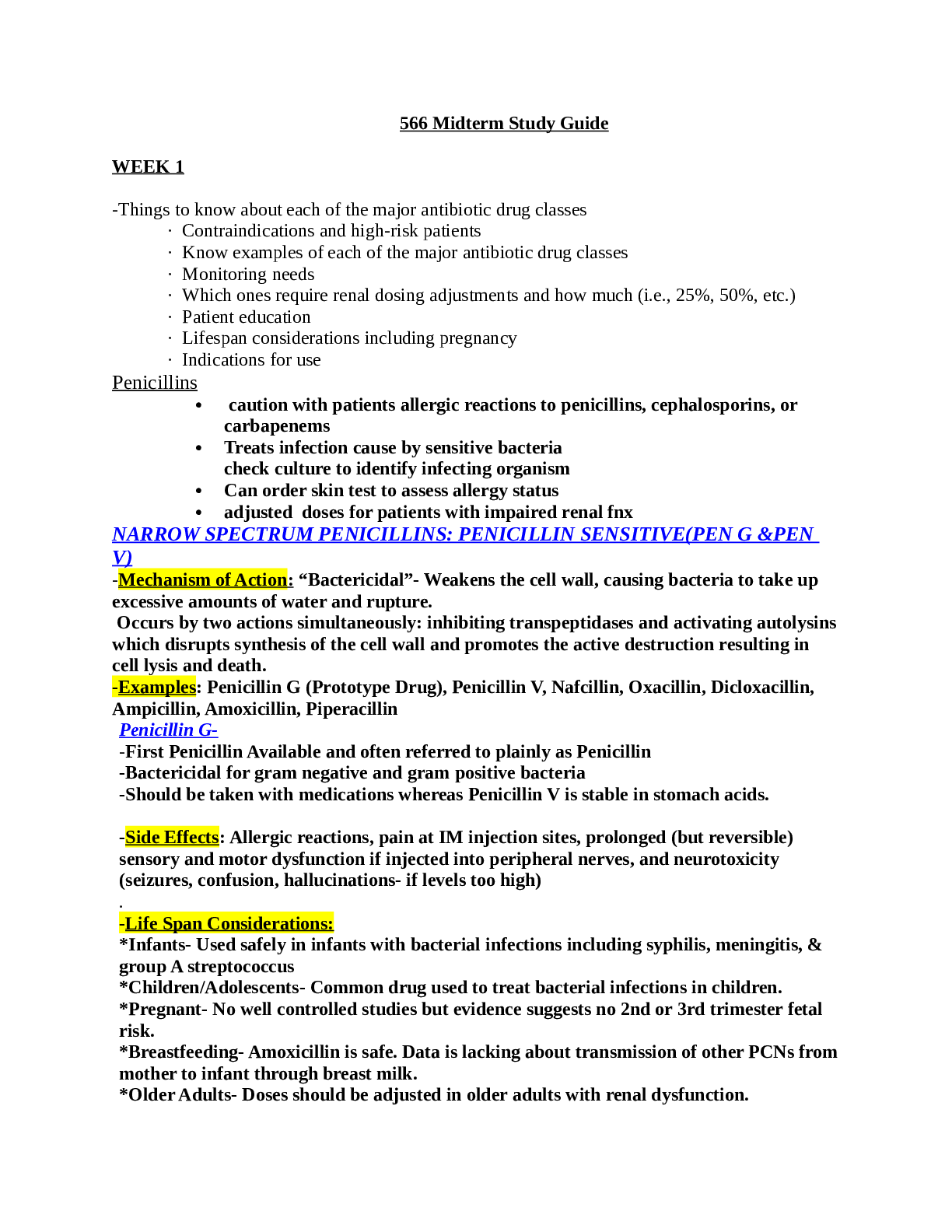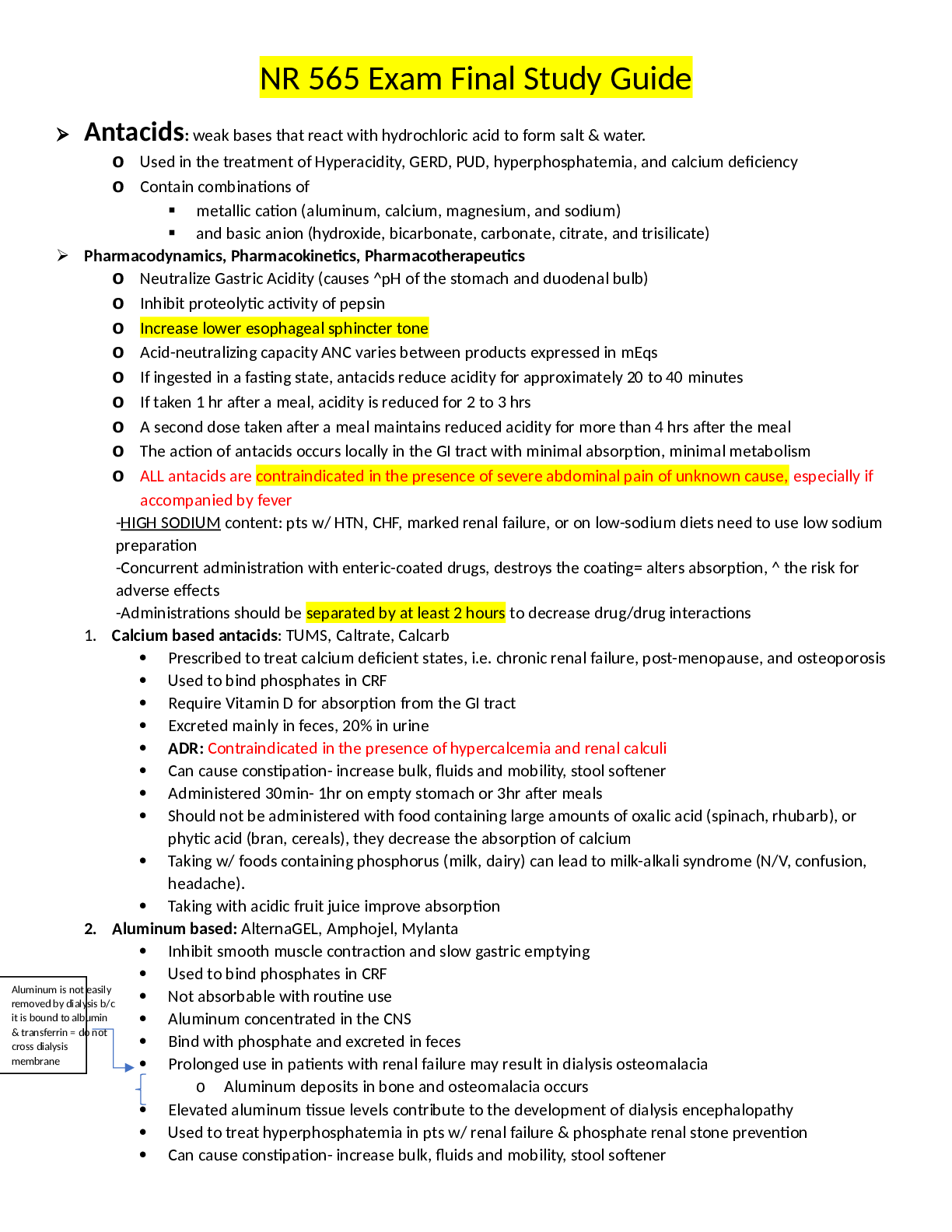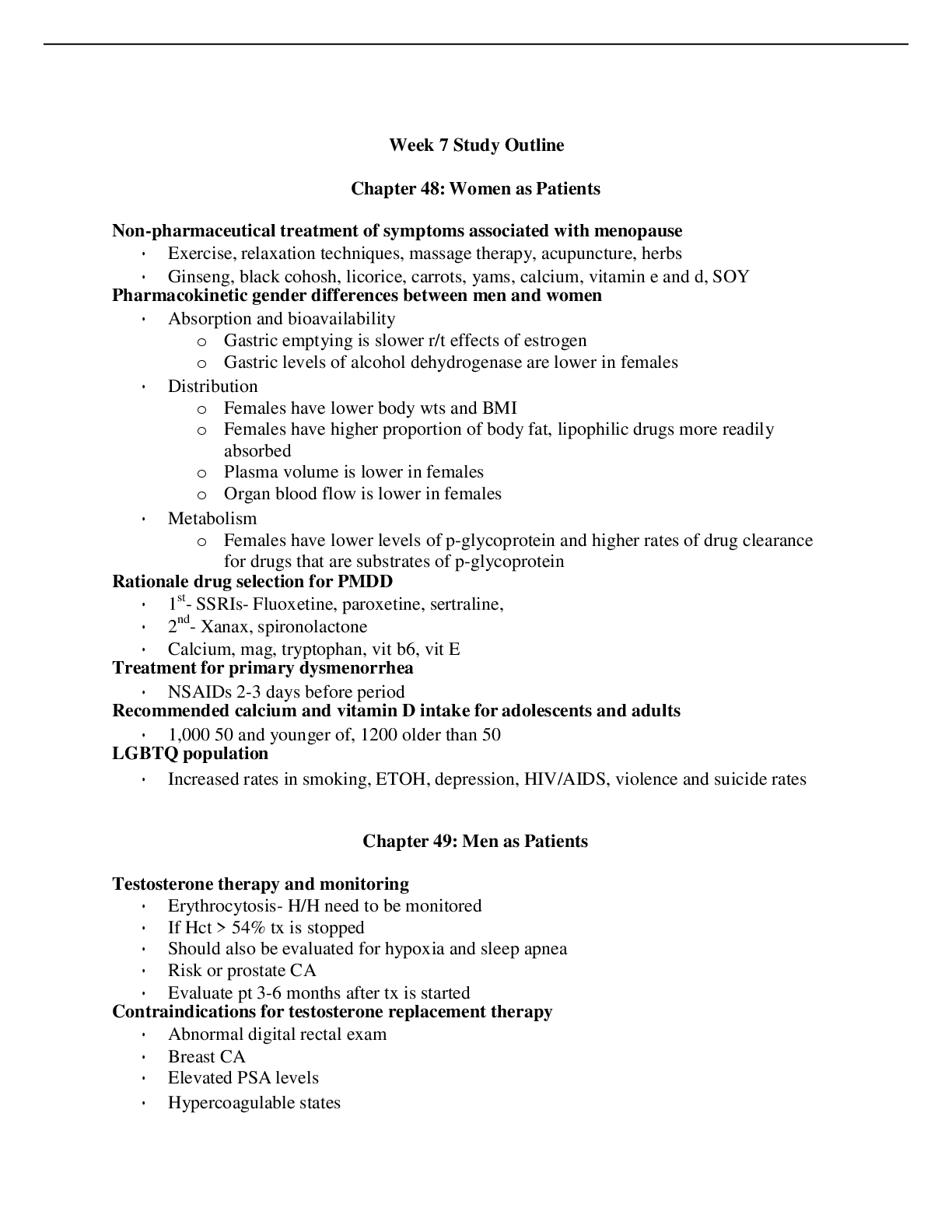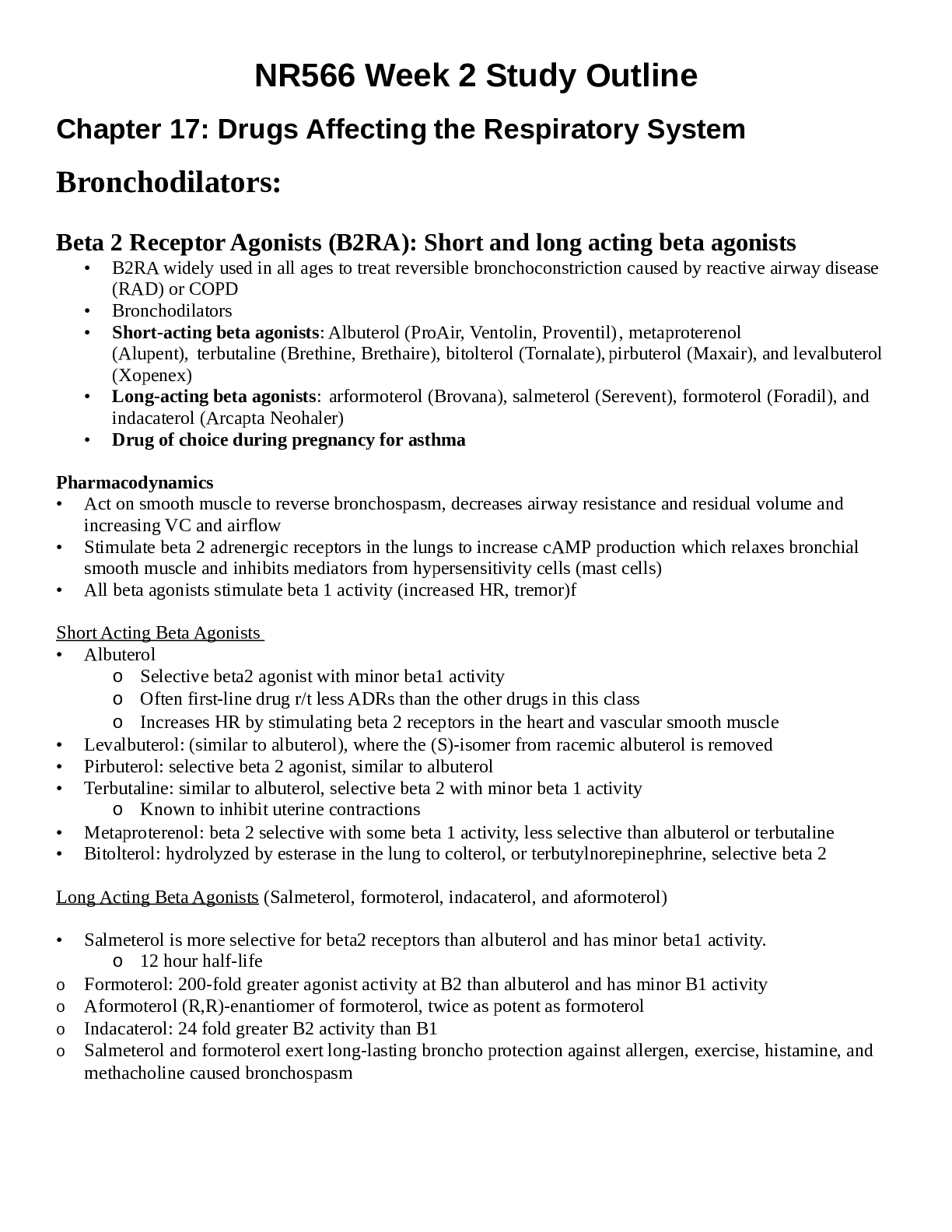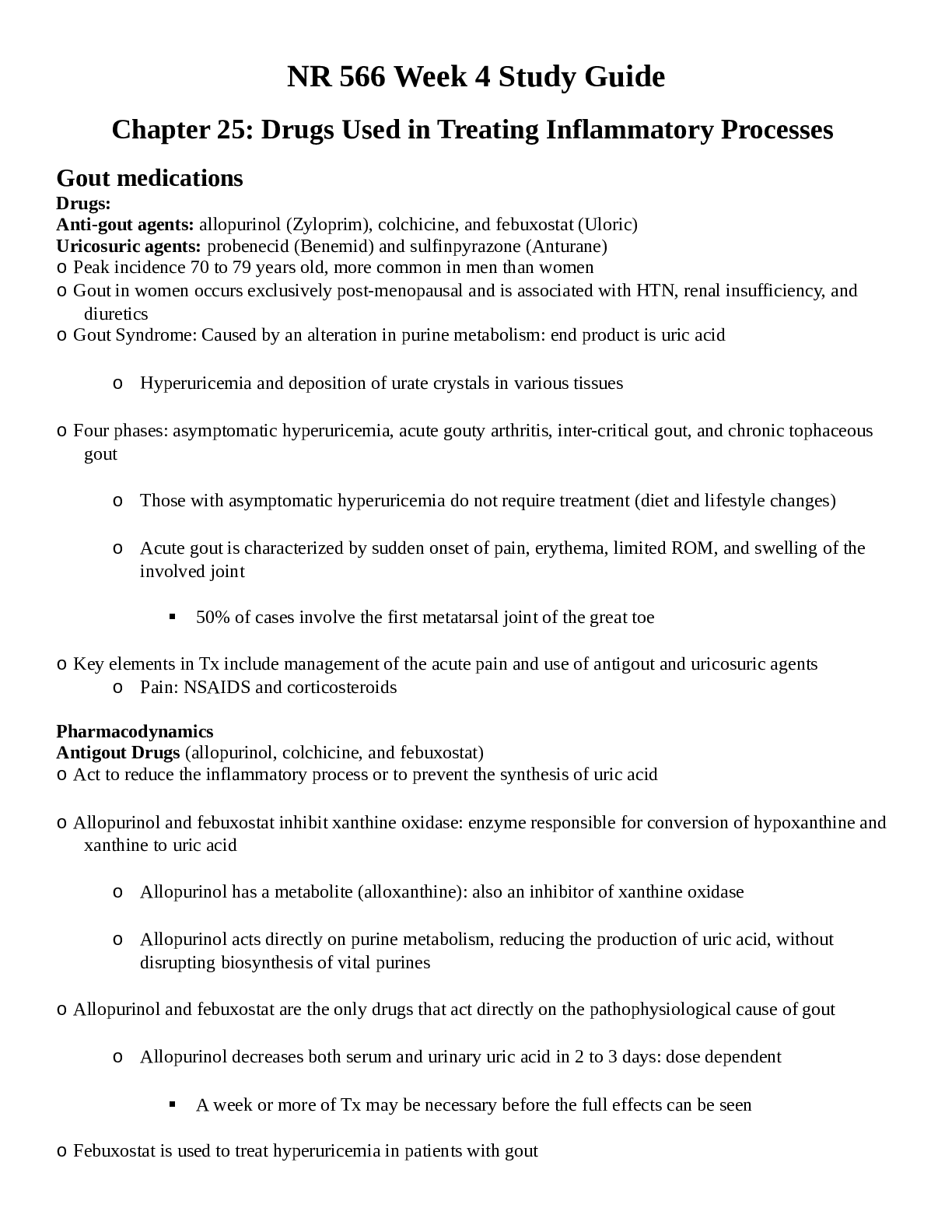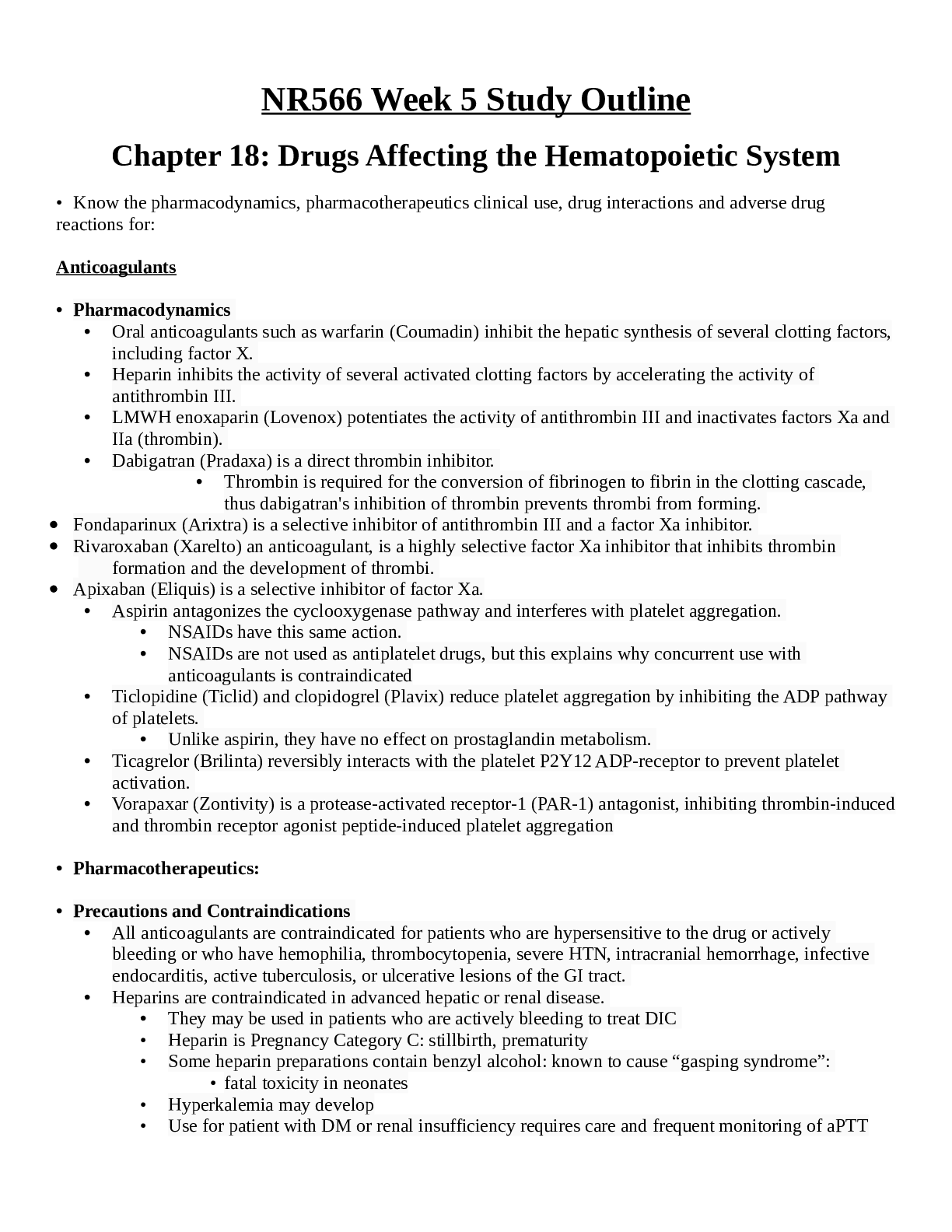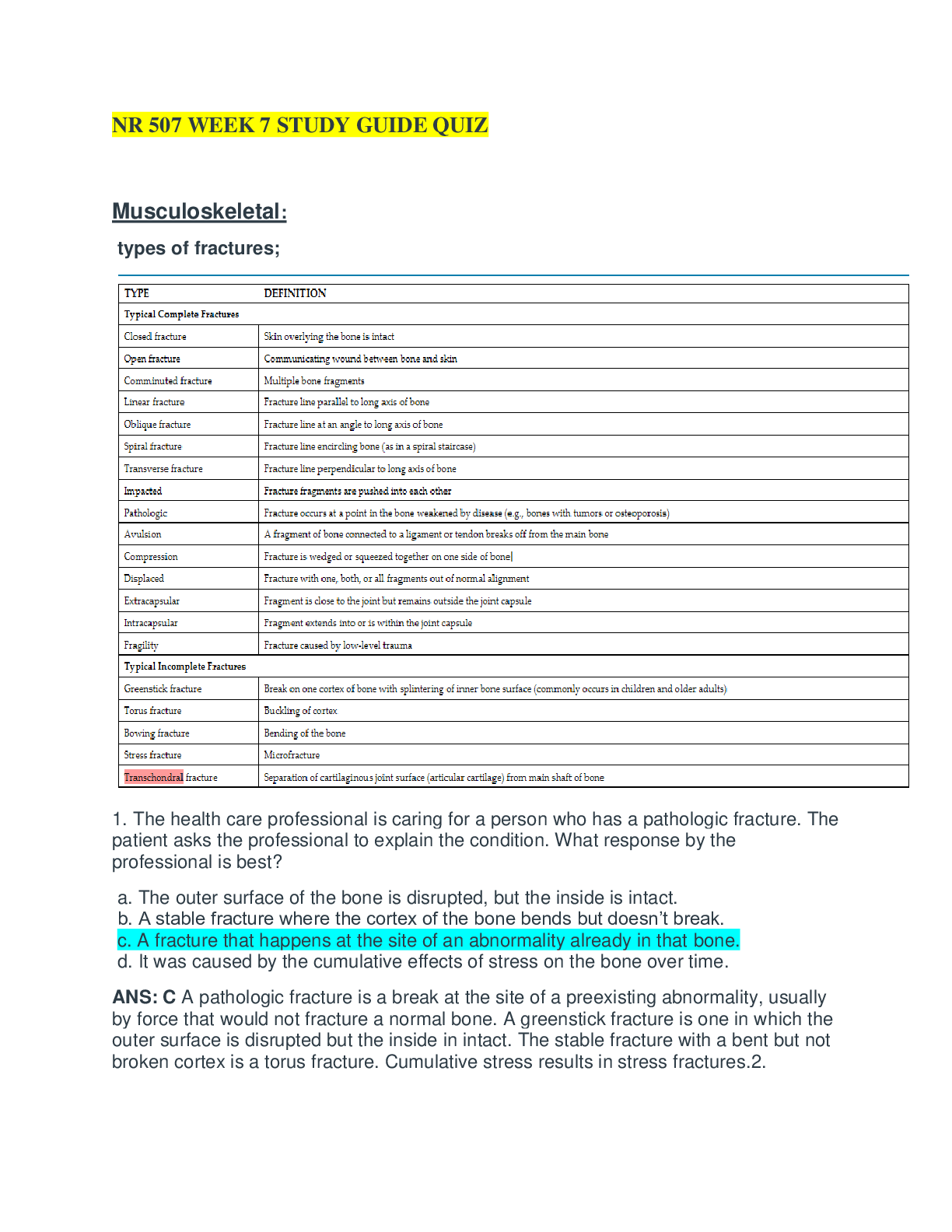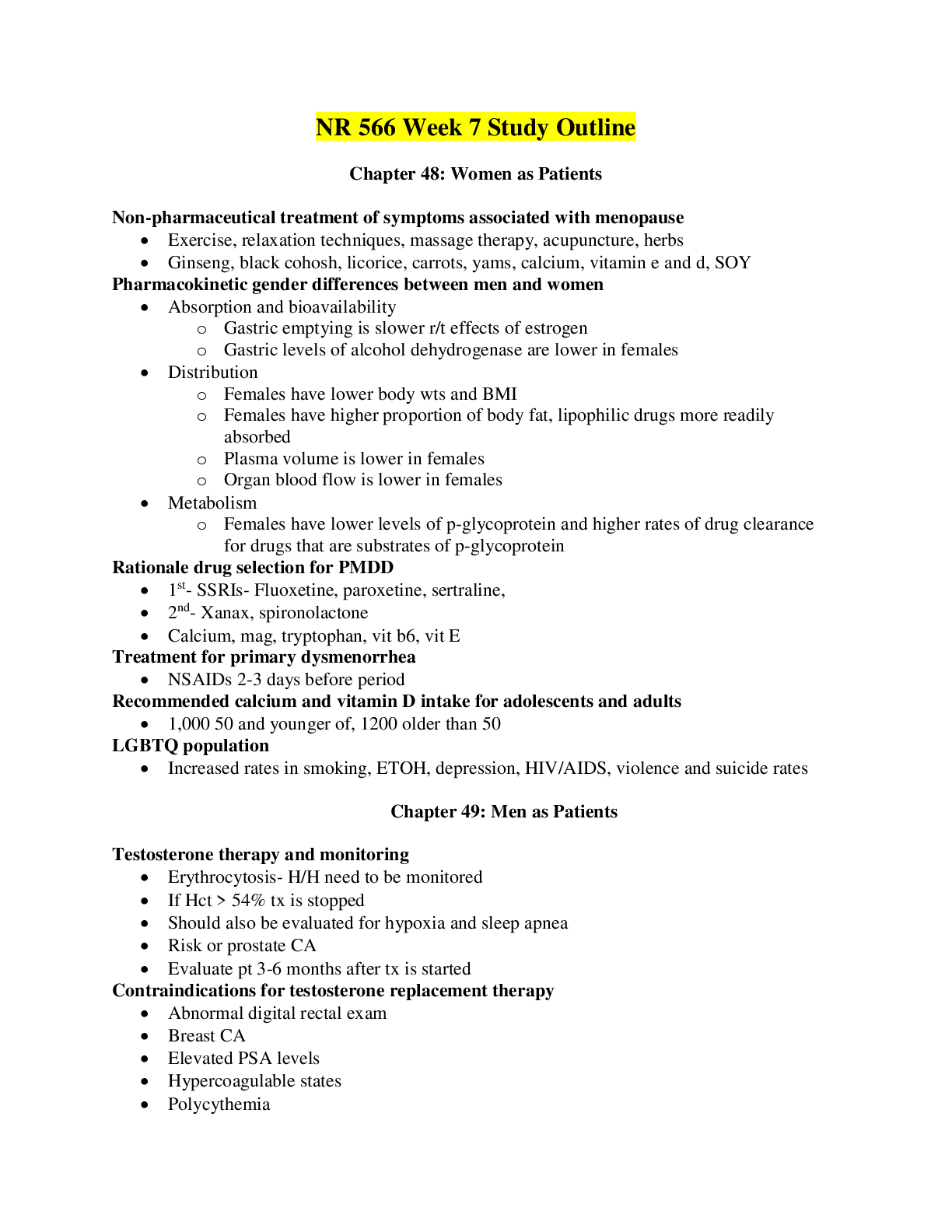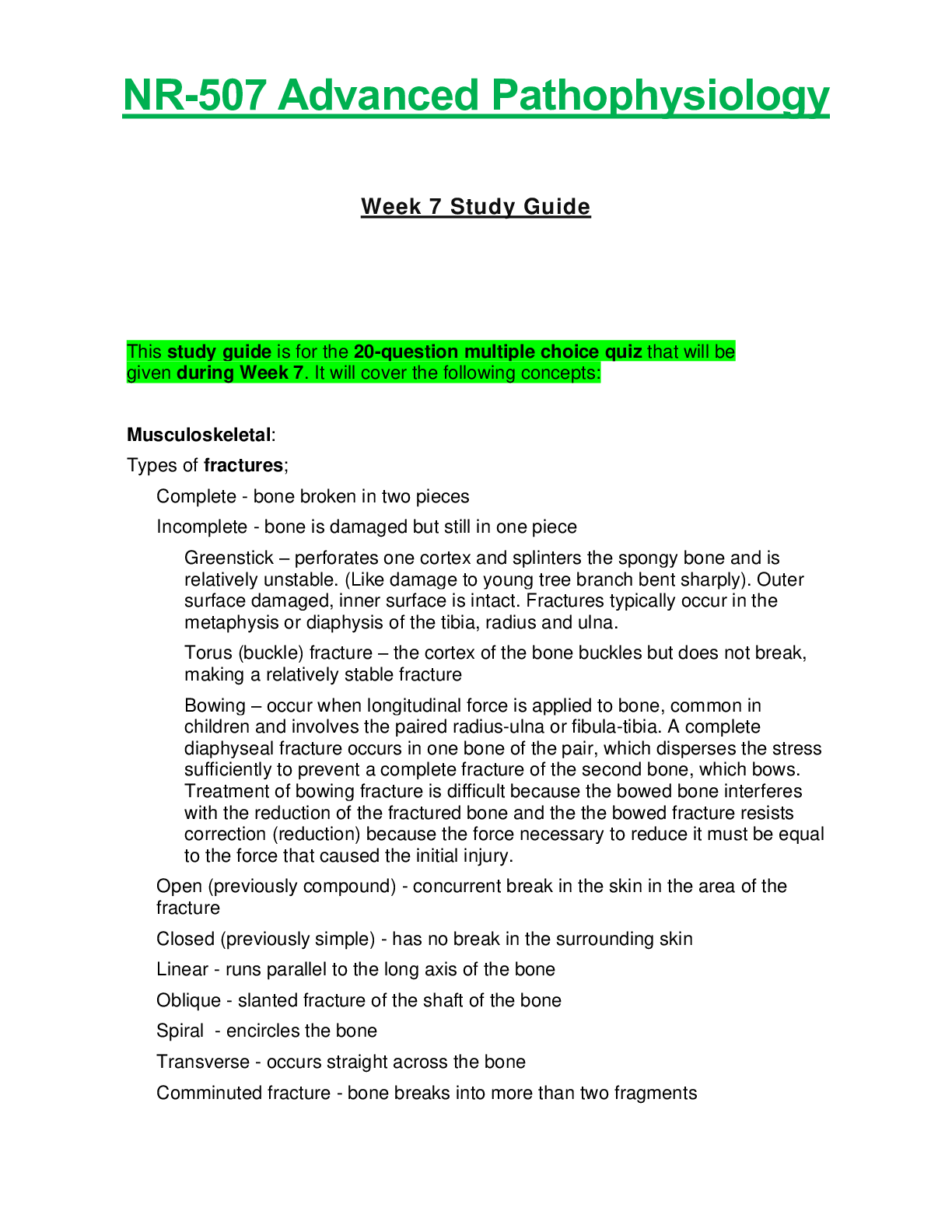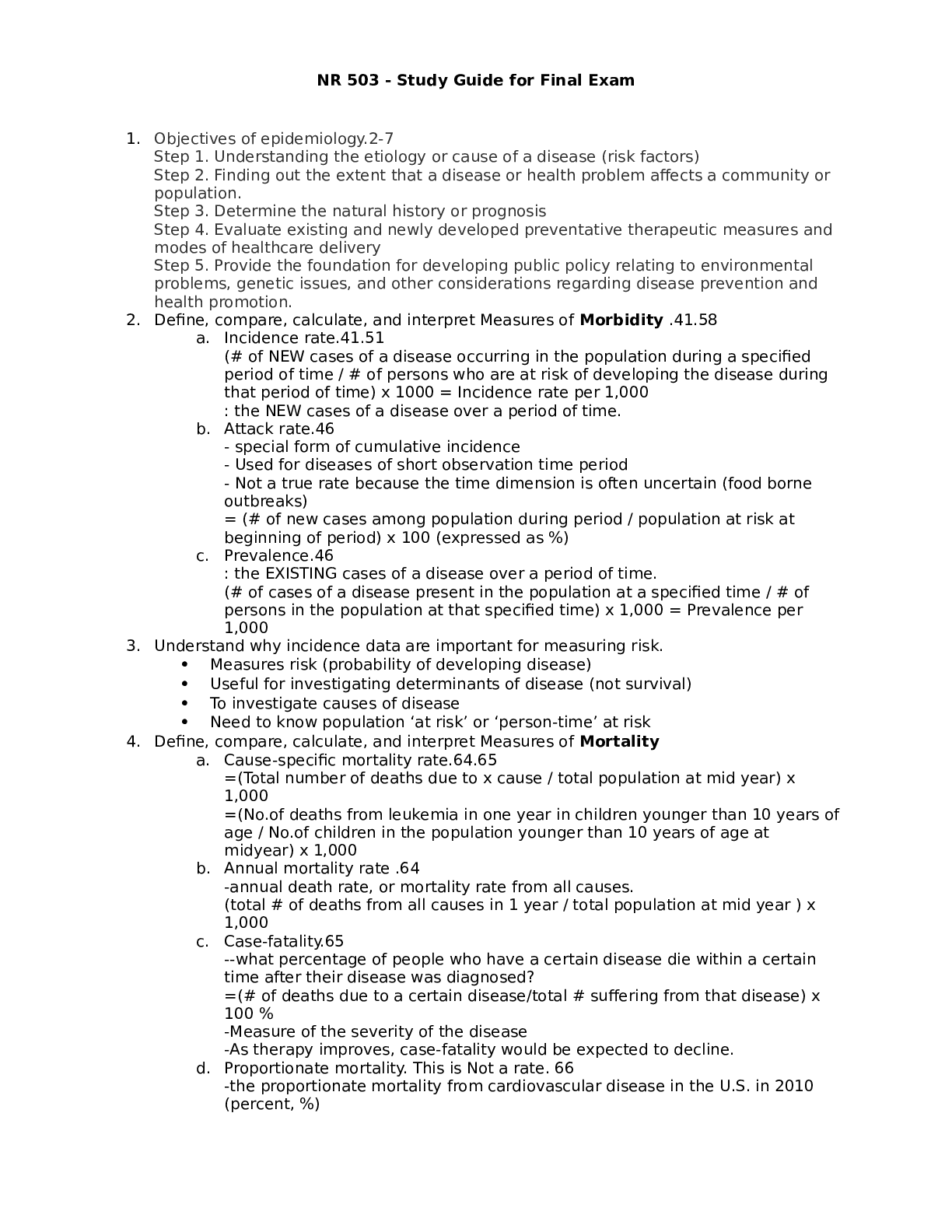*NURSING > STUDY GUIDE > NR 566 Week 7 Study Guide {2022} | Chapter 48: Women as Patients (All)
NR 566 Week 7 Study Guide {2022} | Chapter 48: Women as Patients
Document Content and Description Below
NR 566 Week 7 Study Guide Chapter 48: Women as Patients Pharmacokinetic gender differences between men and women These three medications have shown differences that are clearly significant betw... een men and women Propranolol (Inderal): early drug that showed a clear gender difference in metabolism (clearance) o PO doses: significantly higher (63%) rate of clearance in men than women o IV doses do not do this: indicates hepatic first pass metabolism o Women: show a significantly greater clinical response to PO doses Verapamil (Isoptin, Calan): PO clears more quickly in men than women based on CYP3A4 o Higher absolute bioavailability in women causes greater pharmacodynamic effects on BP and HR in women Erythromycin: more effective in women o More rapidly cleared in women than men r/t CYP 3A4 Pharmacokinetic Parameter Sex-Based Difference Absorption and bioavailability • Gastric emptying time is slower in females, mainly related to the effects of estrogen. Drugs absorbed in the stomach will have longer exposure to absorption sites. • Gastric levels of alcohol dehydrogenase are lower in females. Plasma concentrations are greater in females than males after ingestion of similar amounts of alcohol. • Gastric acid secretion, pH, osmolality, electrolyte concentrations, and levels of bile acids and proteins do not vary significantly between sexes. Distribution • Females have lower body weights and BMI than males. • Females have a higher proportion of body fat. Lipophilic drugs are more readily absorbed and have relatively greater volumes of distribution than hydrophilic drugs. • Plasma volume is lower in females. Drugs with high volumes of distribution will be more concentrated in the plasma of females. • Organ blood flow is lower in females. • Estrogen is distributed attached to a serum-binding globulin. Exogenous estrogens increase levels of many serum-binding globulins such as corticosteroid-binding globulin and thyroxine-binding globulin resulting in less free drug. Metabolism • Studies have been inconsistent in showing differences in CYP450 substrates; the general trend is toward high rates of metabolism for CYP450 3A4 substrates and lower rates for 1A2 and 2D6 substrates. • Females have lower levels of p-glycoprotein and higher rates of drug clearance for drugs that are substrates of p-glycoprotein. Excretion • Gender differences in rates of renal excretion of most drugs are probably more related to simple weight differences. Renal clearance of drugs that are not actively secreted or reabsorbed is dependent on the glomerular filtration rate, which is directly proportional to weight and consequently higher (on average) in men. Pharmacokinetic Parameter Sex-Based Difference • Drugs that are actively secreted by the kidney may show gender differences, but further study is required to demonstrate this difference. Recommended Calcium and Vitamin D Intake for Adolescents and Adults Adolescents o 1,300 mg of calcium daily is recommended for females aged 9 through 18 years, drinking three cups of low-fat or skim milk & consuming 8 ounces of low-fat yogurt. If unable to meet the recommended daily amount of calcium through diet alone, calcium carbonate (Tums, Caltrate, or Viactiv) with food to maximize absorption. o vitamin D is required for optimal calcium absorption a daily multivitamin that includes at least 400 IU vitamin D should also be taken Adults o 19-50 years old: 1,000 mg/day o 51-70 y/o: 1,000 mg/day o 71+: 1,200 mg/day Non-Pharmaceutical Treatment of Symptoms Associated with Menopause Many options for managing menopausal symptoms are available exercise, relaxation techniques, massage therapy, acupuncture, herbs, or pharmaceuticals (such as HRT) Some women unable or choose not to take HRT and have turned to phytoestrogenssubstances with estrogen-like properties found in o certain herbs: ginseng, black cohosh, dong quai, fenugreek, and licorice o certain foods—especially carrots, yams, and soy products—varying efficacy Nutritional supplements for a diet rich in calcium and vitamins E, D, and B complex. Menopausal women should avoid foods such as caffeine, alcohol, and spicy foods that can trigger vasomotor symptoms Table 48-3: Alternative Therapies for Menopause Symptoms o Hot flashes: pharmaceuticals o Reduced libido: talk with the patient, sexual counseling/therapy, investigate sleep issues, screen for depression, weight loss, suggest using alternative therapies for vaginal dryness or soreness o Mood changes: Meditation, yoga, prayer, adequate sleep, stress management techniques o Sleep disturbances: pharms, exercise, decreased intake of or avoid stimulants, avoid alcohol, meditate, pray o Stress incontinence: decrease intake of caffeine beverages and diuretics, Kegel exercises, treat/reduce constipation, bladder training program o Vaginal dryness or soreness: reduce or avoid use of medication such as antihistamines, decongestants, anticholinergics, and diuretics, alternative therapies for hot flashes (increases epithelial lining of vaginal tissues), water soluble lubricants o Weight fluctuations: Exercise 30 to 60 minutes daily Emphasis in the care of women in their 50s should be on health promotion and prevention of the diseases of older age o After menopause the lipid profile of women changes. The decline in endogenous estrogen removes a protective physiological mechanism that supports higher levels of HDL and lowers LDL Loss of estrogen places a woman at increased risk for CAD, HTN, and stroke o Primary prevention studies demonstrate that diets high in complex carbohydrates, fiber, and protein and low in animal fat are best thirty minutes of moderate physical activity for at least 6 days per week is recommended for best health several years of gradual decline or erratic levels of endogenous estrogen precede cessation of ovarian function. All women experience changes in their secondary sexual characteristics. Some women barely notice vasomotor instability, whereas hot flashes and insomnia incapacitate others Treatment for Primary Dysmenorrhea Pain shortly before or during menstruation, one of the most common gynecological complaints more common in women under 20 Primary dysmenorrhea due to increased myometrial activity, with contractions induced by prostaglandins in the second half of the menstrual cycle. NSAIDS are the first line of drug treatment for women not desiring contraception (OTC doses may be suboptimal) o particularly effective if begun 2 to 3 days before menses or at the first sign of bleeding o Preparations containing acetaminophen, which is not an NSAID, are ineffective because of the absence of anti-prostaglandin properties. For women who want contraception: PO contraceptives are a good therapeutic choice Decreased prostaglandin synthesis results from an atrophic endometrium Complementary and alternative medicines shown to improve symptoms of dysmenorrhea thiamine (vitamin B1), magnesium, vitamin E, and omega-3 fatty acids Comfort measures, heat (poultices or heating pads), massage/effleurage, guided imagery, progressive relaxation, yoga, exercise, and meditation Decreasing dietary intake of salt, sugar, and red meat in the luteal phase and increasing water intake may reduce edema If dysmenorrheal discomfort is NOT relieved by one of the NSAIDS, further investigation into the cause of symptoms is required. Secondary dysmenorrhea usually develops later in a woman’s life (after age 25) and often due to pelvic pathology o such as adenomyosis, endometriosis, pelvic inflammatory disease (PID), endometrial polyps, and myomas (fibroids) o Many of the relief measures for primary dysmenorrhea are also helpful for women with secondary dysmenorrhea, but treatment is aimed at removal of the underlying pathology. Patient Education for NSAID Administration to Treat Dysmenorrhea Particularly effective if begun 2 to 3 days before menses or at the first sign of bleeding Preparations containing acetaminophen, which is not an NSAID, are ineffective because of the absence of anti-prostaglandin properties. Take with at least 8 oz of water GI ADRs: Risk for GI bleeding, gastric ulcers Do not take more than prescribed Rationale Drug Selection for PMDD To meet diagnostic criteria, patients must exhibit five or more symptoms, including at least one “core” symptom. o core symptoms markedly depressed moods, heightened anxiety/tension/edginess/nervousness, affective lability, persistent and marked anger and irritability o other symptoms, such as decreased interest in usual activities, marked lack of energy (fatigue, lethargy), hypersomnia or insomnia, difficulty concentrating, appetite changes or cravings, and a subjective sense of being overwhelmed or “out of control Symptoms are cyclical, occurring during the luteal phase of the menstrual cycle and are significantly reduced or disappear completely during menstruation. Nutritional, herbal, and drug therapies play a role in this complex disorder First-line therapy for PMDD SSRIs. o fluoxetine, paroxetine, and sertraline o Both luteal phase and continuous use are beneficial, continuous use may be better when cycles are not predictable, such as during peri-menopau [Show More]
Last updated: 1 year ago
Preview 1 out of 18 pages

Reviews( 0 )
Document information
Connected school, study & course
About the document
Uploaded On
Apr 15, 2022
Number of pages
18
Written in
Additional information
This document has been written for:
Uploaded
Apr 15, 2022
Downloads
0
Views
81
